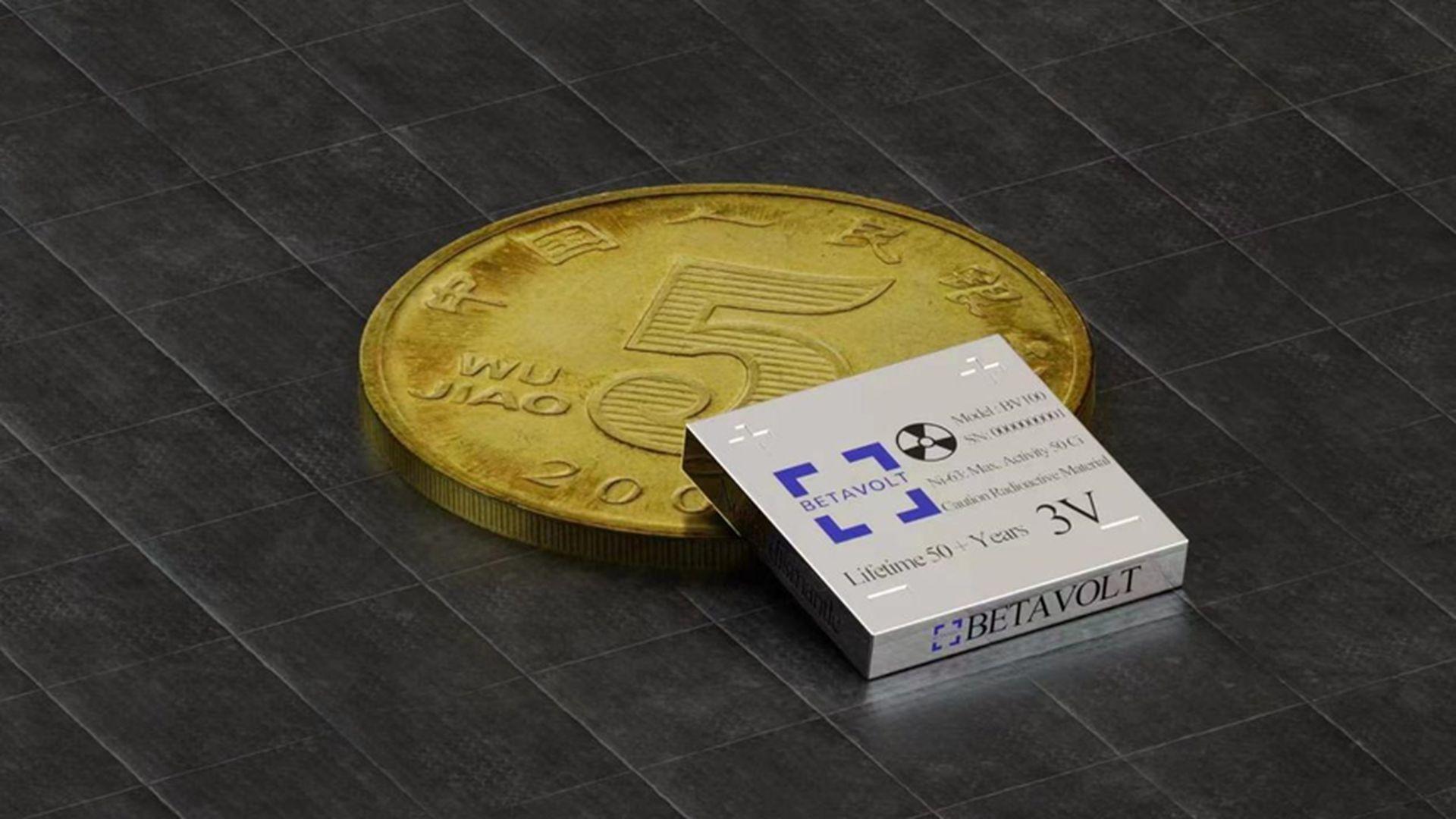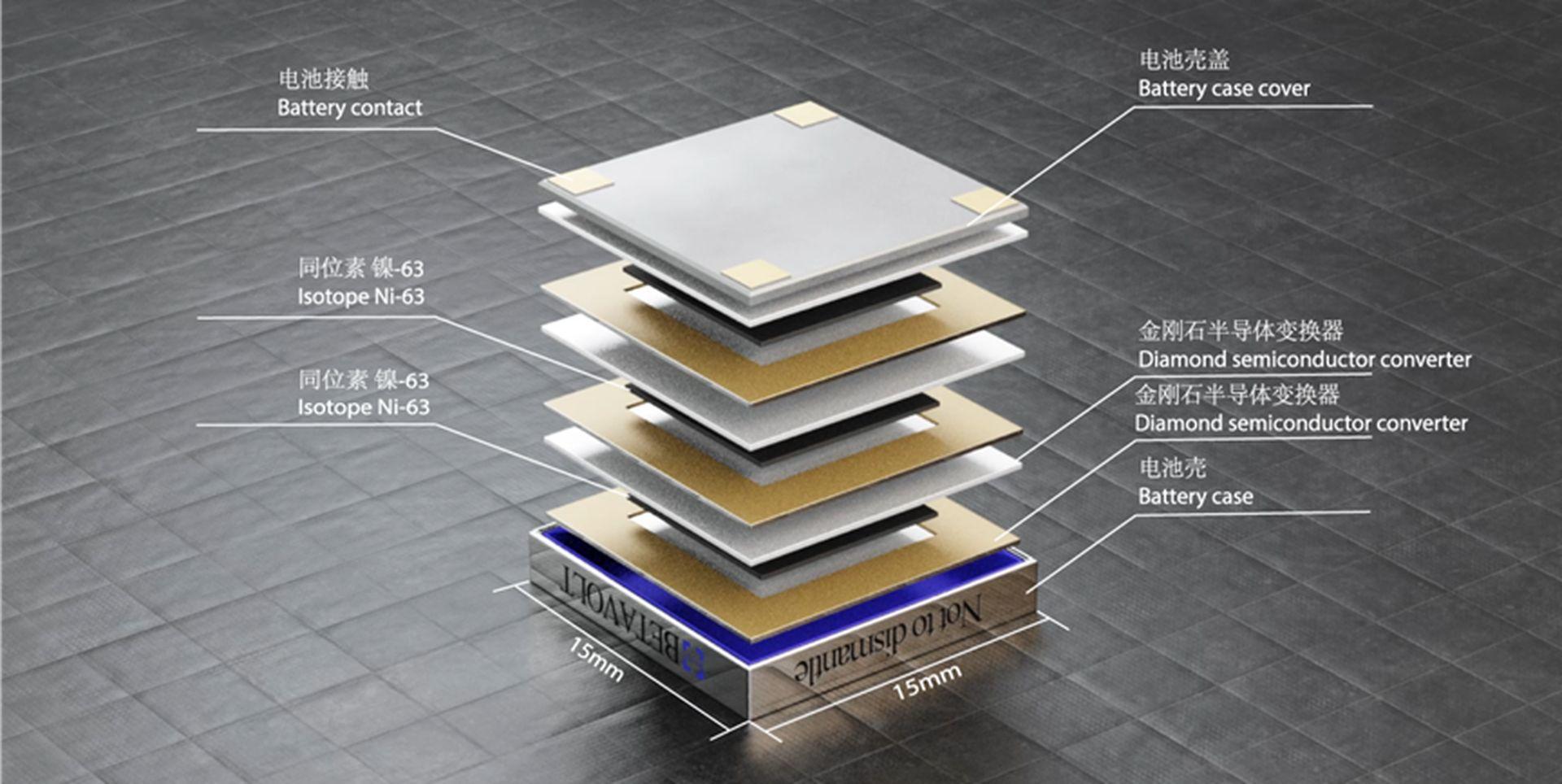China’s Betavolt just cracked the code on the miniature atomic battery, also known as nuclear battery, igniting a new era of long-lasting power with potential to revolutionize industries.
What is an atomic battery (nuclear battery)?
An atomic battery, also known as a nuclear battery or radioisotope battery, is a device that harnesses the energy released by the decay of radioactive isotopes to generate electricity. Unlike nuclear reactors, which use a chain reaction to create energy, these batteries rely on the spontaneous decay of unstable atomic nuclei.
Here’s a breakdown of the key points:
- Power source: Decay of radioactive isotopes (unstable atomic nuclei).
- Energy conversion: Semiconductor converters transform the decay energy into electricity.
- Benefits:
- Long lifespan: Can power devices for decades without needing a recharge.
- Compact size: Miniaturization is making them suitable for diverse applications.
- Maintenance-free: No need for regular upkeep.
- Challenges:
- Radioactive material: Requires careful handling and disposal.
- Initial cost: Can be expensive to manufacture.
- Regulations: Subject to strict regulations due to the radioactive nature.
The technology is still developing, but it holds immense potential for powering various devices in remote locations, space exploration, and medical implants. Betavolt’s recent breakthrough in China highlights the progress being made towards miniaturization and civilian application of atomic batteries.

Betavoltaic nuclear battery
Beijing’s Betavolt New Energy Technology has unveiled a game-changer: a miniature atomic battery. This tiny titan, powered by nickel-63 nuclear isotope decay, boasts a whopping 50-year lifespan without needing a recharge or a pit stop for maintenance. Forget bulky, finicky batteries – Betavolt’s creation is paving the way for a new era of long-lasting, maintenance-free energy.
But wait, there’s more! This nuclear battery, packing the punch of a tiny reactor, isn’t just small; it’s modular too. Think Lego bricks for clean energy – you can snap these puppies together to create even more power, making them perfect for everything from drones soaring through the sky to AI bots on the ground.
Speaking of the ground, Betavolt’s atomic batteries are already taking their first steps towards widespread use. They’re currently in the pilot stage, and mass production is just around the corner. This means we could soon see them powering a revolution across various industries:
- Aerospace: Imagine satellites and probes fueled by these mini powerhouses, exploring the cosmos for decades!
- AI: Forget constantly swapping batteries in your robots – this atomic battery powered brains will keep learning and adapting for years.
- Medical: Pacemakers and other implants could see their lifespans skyrocket, improving patient care significantly.
- Sensors: Remote sensors monitoring everything from pipelines to wildlife could operate autonomously for years, gathering crucial data.
- Drones and micro-robots: These tiny flyers and crawlers could stay airborne or on the move for extended periods, expanding their capabilities.
The time has come for the Chinese atomic battery
Kicking off with atomic battery technology, also referred to as nuclear battery tech, this innovative approach harnesses the power from the decay of nuclear isotopes, transforming it directly into electrical energy via semiconductor converters. This niche exploded onto the scene back in the 1960s, capturing the imagination and resources of powerhouses like the USA and the Soviet Union.
Nowadays, it’s the nuclear battery that’s soaring through the stratosphere, exclusively used within the aerospace sector. These batteries pack a punch in terms of size and weight, crank up the heat with high internal temperatures, and don’t shy away from hefty price tags, making them a no-go for everyday folks. However, the recent buzz is all about shrinking these powerhouses down to size, modularizing them for flexibility, and transitioning nuclear battery use to the civilian sphere.
A nod to this trend is seen in China’s ambitious “14th Five-Year Plan and 2035 Vision Goals,” highlighting the shift towards making nuclear technology more accessible to the public and broadening the use of nuclear isotopes.

Which metal is used to make nuclear batteries?
powers this innovation?” The answer lies in the Betavoltaic nuclear batteries which leverage a novel tech approach. These devices generate electricity by capturing the energy from beta particles (electrons) emitted during the decay of nickel-63. The Betavolt team has pushed boundaries by crafting a unique single-crystal diamond semiconductor, merely 10 microns thick, sandwiching a 2-2-micron-thick nickel-63 layer between diamond semiconductor converters. This setup effectively turns decay energy into an electric current, epitomizing modular design; these batteries can link up in series or parallel, tailoring to various needs in size and capacity.
Betavolt’s visionary, Zhang Wei, has announced the imminent launch of the BV100, setting the stage as the world’s first mass-produced nuclear battery. This compact powerhouse, smaller than a coin, promises a 100 microwatts output at 3V, proving its might with 8.64 joules of daily energy production. Looking ahead, Betavolt eyes a 1-watt battery by 2025, potentially revolutionizing how we power devices—from endless mobile phone usage to drones with unprecedented flight times, all hinging on policy green lights.
Get your cut from the Canada Apple battery settlement
Highlighting its distinct nature, the atomic battery shatters norms with a physical mechanism, offering an energy density over ten times that of conventional batteries, boasting 3,300 megawatt-hours from just 1 gram, immune to extreme reactions from punctures or impacts. Its reliability spans over 50 years without degradation, unfazed by environmental or load changes, functioning across a vast temperature range without self-discharge. Moreover, Betavolt’s innovation shines in safety and environmental stewardship; its nuclear batteries leave no external radiation hazards, morphing nickel-63 into harmless copper post-decay, sidestepping the recycling dilemma faced by chemical batteries.
On the patent front, Betavolt has secured its ground in Beijing, with eyes set on global PCT patents. Their technological prowess earned accolades at the 2023 Innovation Competition by China National Nuclear Corporation, underlining the industry’s faith in Betavolt’s contribution to nuclear technology. With ongoing explorations into strontium-90, promethium-147, and deuterium, Betavolt aims to elevate nuclear battery performance and longevity.
Zhang Wei underscores the game-changing role of the fourth-generation diamond semiconductor in Betavolt’s arsenal, a testament to their pioneering status in doping large-size diamond materials. This expertise in high-efficiency diamond converters is crucial for nuclear battery production, marking Betavolt as a trailblazer in new energy, semiconductor technology, and ultra-long carbon nanotube materials, cementing its innovation legacy.
Featured image credit: Kerem Gülen/Gemini Advanced






